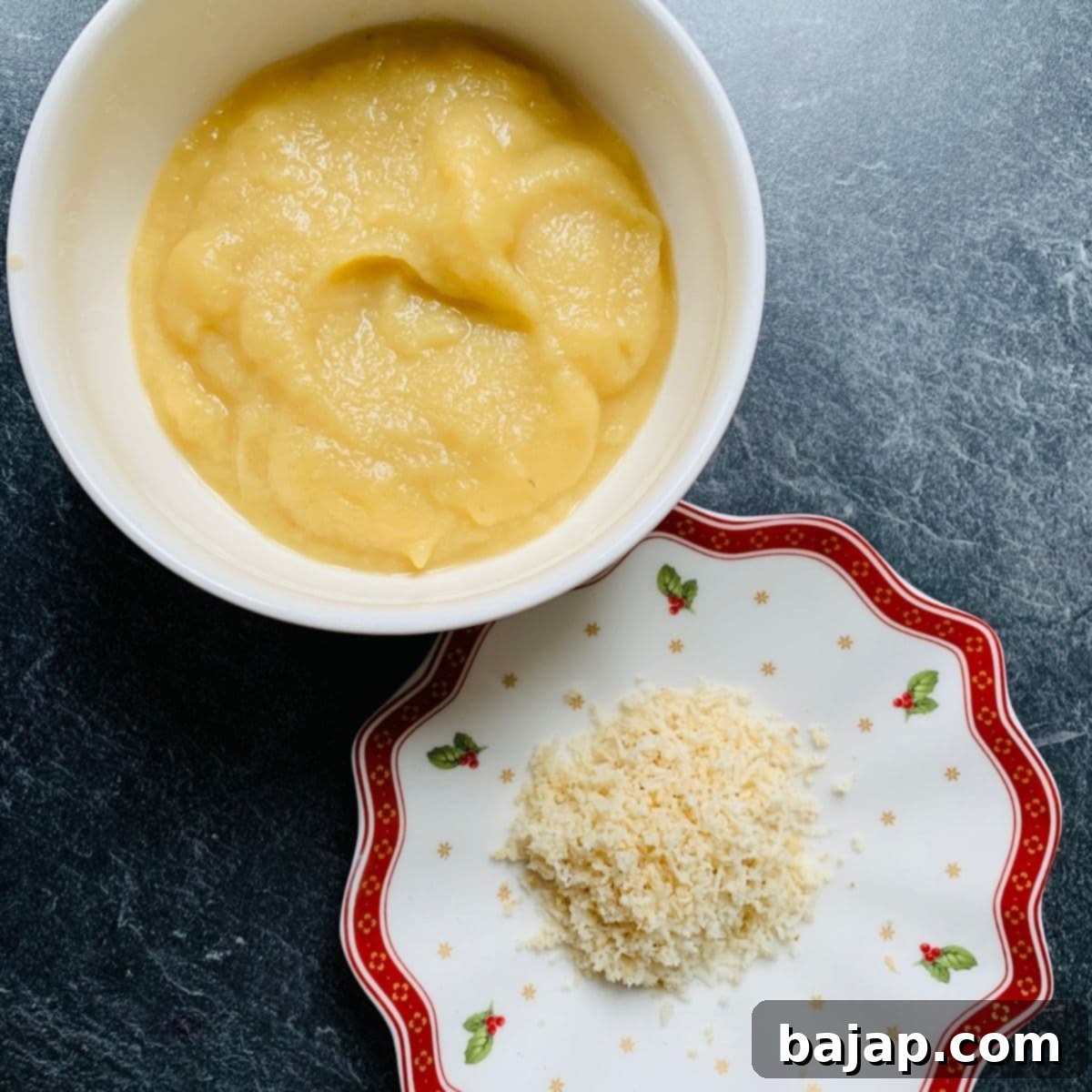Mastering Apfelkren: Your Guide to Authentic Homemade Apple Horseradish Sauce
Originating from the heart of Austria, Apple Horseradish Sauce, known affectionately as Apfelkren in German-speaking regions, is a culinary delight that perfectly balances the fiery kick of horseradish with the natural sweetness of apples. This exquisite, naturally gluten-free sauce is more than just a condiment; it’s a versatile companion that elevates a wide range of dishes, from traditional holiday feasts to summer barbecues.
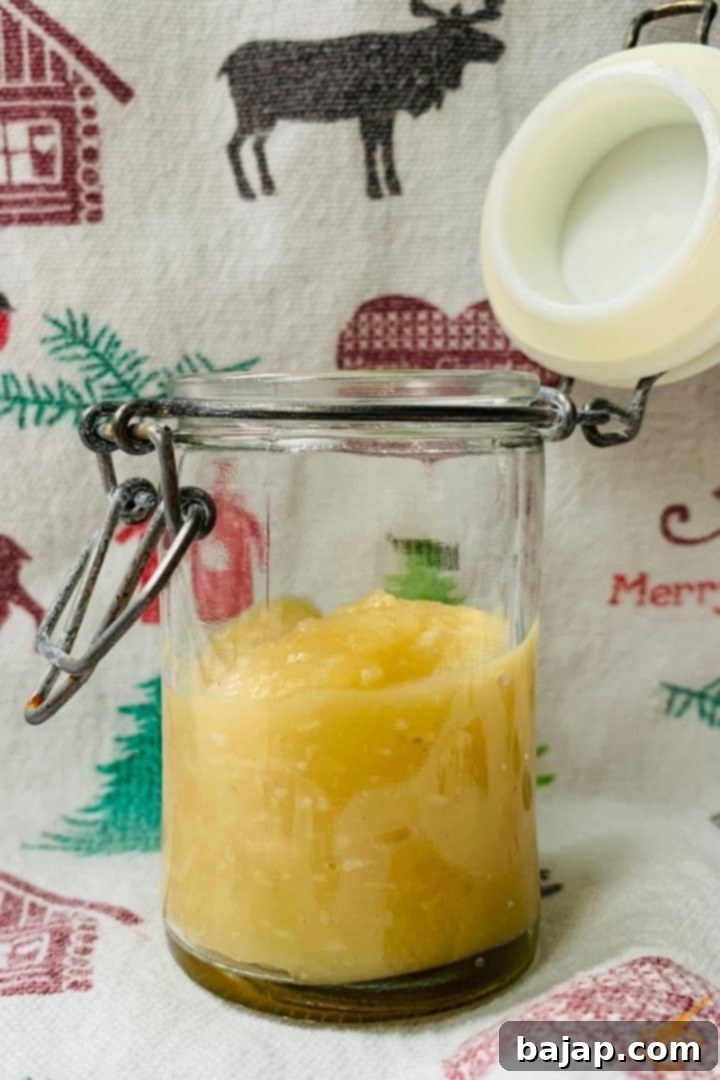
Why You’ll Fall in Love with Homemade Apfelkren
There’s something truly special about a sauce that can transform a meal, and Apfelkren does just that. This homemade apple horseradish sauce delivers a unique flavor profile where the piquant zing of horseradish meets the mellow sweetness of apple in perfect harmony. Unlike many store-bought alternatives, crafting Apfelkren at home allows you to control the intensity of both flavors, ensuring they complement, rather than overpower, the main dish. It’s an incredibly easy-to-prepare delicacy that promises to impress your guests and bring an authentic Austrian touch to your table.
Apfelkren shines in its versatility. It’s traditionally served with classic Austrian dishes like Tafelspitz (prime boiled beef), a staple of Christmastime and festive gatherings. However, its appeal extends far beyond the holidays. Imagine it perfectly complementing succulent grilled meats on a warm summer evening, adding a vibrant kick to roast beef, or brightening up your Easter ham. It even pairs wonderfully with a tender air fryer turkey breast, offering a refreshing contrast to rich flavors. Its gluten-free nature makes it a safe and delicious choice for almost everyone at your table.
🥘 Ingredients for the Perfect Apfelkren
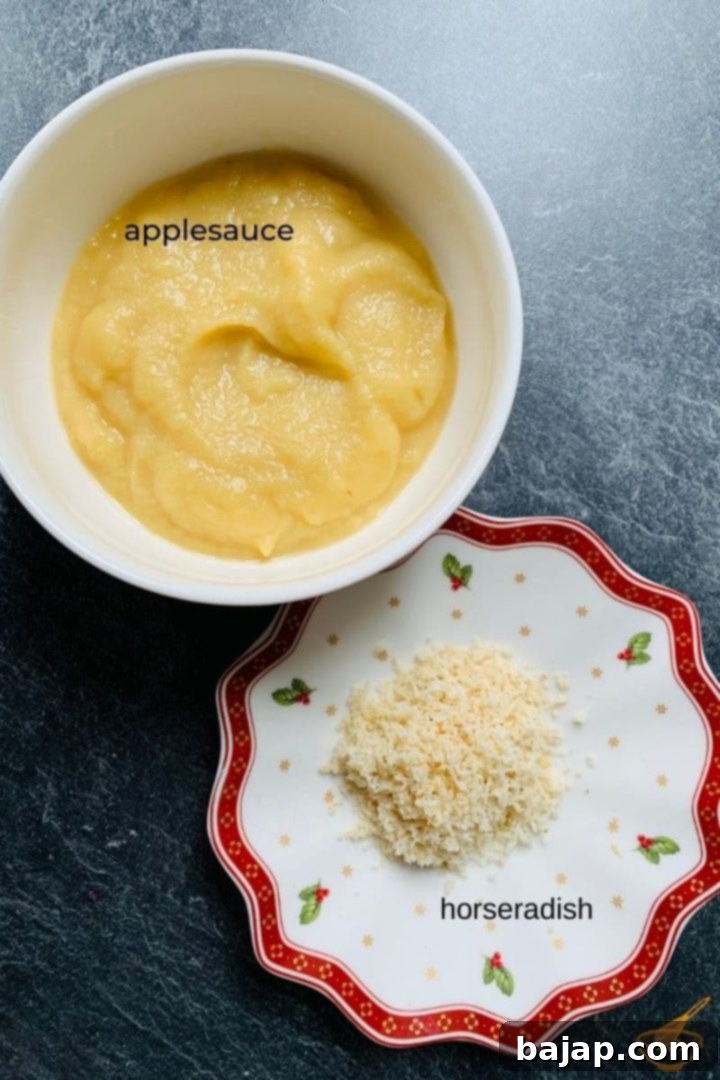
Crafting this delightful Apfelkren requires only a handful of ingredients. The beauty lies in their quality and freshness:
- 12.7 oz (360 g) Apple Sauce: You can use either a high-quality store-bought apple sauce or prepare your own for an even fresher taste. We recommend unsweetened apple sauce to better control the final flavor balance.
- 2-3 tablespoons Fresh Horseradish: The amount depends entirely on your preference for spiciness and intensity. Start with less and add more to taste.
Prepared Horseradish or Fresh: The Essential Choice
While prepared horseradish is readily available in most grocery stores, I strongly advocate for using freshly grated horseradish root for the ultimate Apfelkren. The difference in flavor and pungency is significant.
- Prepared Horseradish: Often comes pre-grated and preserved. It tends to be much milder, and its texture can be inconsistent, sometimes too coarse. The volatile oils (isothiocyanates) responsible for horseradish’s signature heat degrade over time and with processing, resulting in a less vibrant flavor.
- Fresh Horseradish: Offers a far superior, potent, and crisp flavor. When grated fresh, its pungent oils are at their peak, delivering that unmistakable sinus-clearing heat and a clean, sharp taste that truly makes Apfelkren shine. The texture is also finer and more integrated into the sauce.
If you have the opportunity, always opt for fresh horseradish when shopping. An unpeeled horseradish root keeps surprisingly well in the refrigerator for a few weeks if wrapped properly, allowing you to enjoy its fresh taste whenever inspiration strikes. Trust me, the extra effort of grating it yourself is absolutely worth it for an authentic Apfelkren experience.
Enhance Your Meal: This Apfelkren recipe is a fantastic accompaniment to various dishes. Consider serving it alongside classic Tafelspitz (Austrian Prime Boiled Beef), crispy Erdäpfelschmarrn (Austrian grated pan-fried potatoes), or with a refreshing Chives Sauce for a truly authentic Austrian spread.
🍽 Essential Equipment
Making Apfelkren is straightforward and doesn’t require a lot of specialized tools. Here’s what you’ll need:
- Small Mixing Bowl: For combining the applesauce and horseradish.
- Grater: A fine grater is ideal for achieving the best texture for your horseradish. A box grater with a fine side or a microplane works perfectly.
- Tablespoon: For measuring and mixing.
- Cutting Board: Essential for safely preparing your horseradish root.
🔪 Step-by-Step Instructions

One of the most appealing aspects of this Apfelkren recipe is its incredible simplicity and speed. You’ll have a fresh, flavorful sauce ready in minutes!
- Prepare the Horseradish: Begin by peeling the outer skin from the portion of the horseradish root you intend to grate. If you uncover any green sections beneath the peel, it’s crucial to cut these away as they can impart an undesirable bitter taste to your sauce. Once peeled, grate the horseradish root directly into a small bowl or onto your cutting board.
- Grating Technique for Best Texture: To ensure your horseradish is finely grated and not fibrous, hold the root against the grater’s surface at a 90-degree angle. This technique helps to achieve a fine, consistent texture, which is key for a smooth Apfelkren.
- Ventilation is Key: Fresh horseradish releases potent mustard oils that can cause your eyes to tear up. To minimize discomfort, I highly recommend grating the horseradish in a well-ventilated area. Open a window or work directly under a range hood to dissipate the pungent fumes.
- Combine and Taste: Now, pour your store-bought or homemade applesauce into a small mixing bowl. Gradually add the freshly grated horseradish, starting with 2 tablespoons. The key here is to add it little by little, stirring well after each addition and tasting as you go. This allows you to achieve your desired level of spiciness. Remember, you can always add more horseradish, but you can’t take it away! Adjusting the spice to your preference is what makes homemade Apfelkren truly yours.
- Serve Immediately or Chill: Once you’ve reached your perfect balance of sweet and spicy, give the Apfelkren a final stir. And voilà! Your delicious, homemade Apple Horseradish Sauce is ready. It’s incredibly simple and fast!
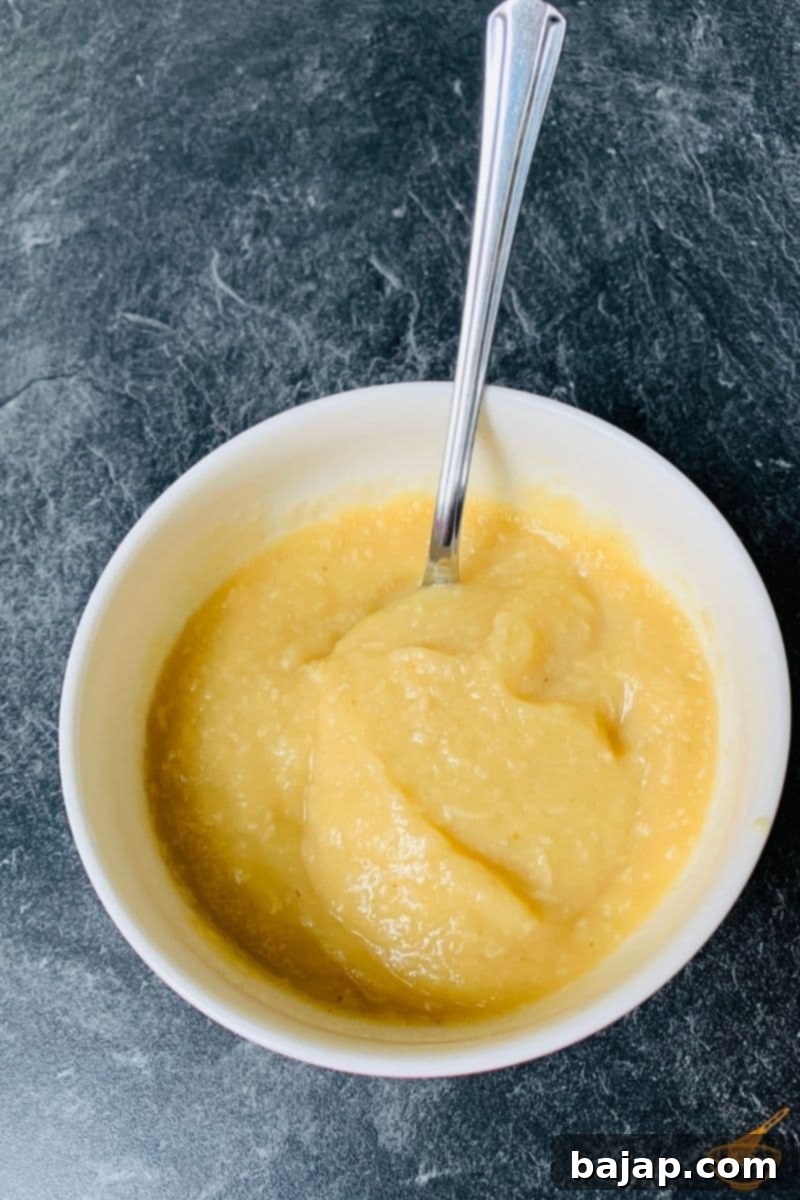
Present your freshly made apple horseradish sauce either directly on the plate next to your main course or, for an elegant touch, in small individual bowls, allowing each guest to add their desired amount.
How to Make Homemade Apple Sauce without Sugar
For an even fresher and healthier Apfelkren, consider making your own unsweetened apple sauce. It’s surprisingly easy and allows you to control the sugar content, ensuring the natural sweetness of the apples shines through. Here’s how:
- Prepare the Apples: Start by peeling and coarsely chopping about 5 medium-sized apples, which typically weighs around 28.22 oz (800 g). Firmer, tart apples like Granny Smith or Honeycrisp work wonderfully for applesauce, but any apple variety can be used depending on your desired sweetness.
- Cook the Apples: Place the chopped apples into a large cooking pot. Add 3.38 oz (100 ml) of water and the juice of half a lemon. The lemon juice helps prevent browning and brightens the flavor. Cook the apples over low heat for approximately 20-30 minutes, or until they are very soft and easily mashable. Stir occasionally to prevent sticking.
- Blend to Perfection: Once cooked, remove the pot from the heat. Use an immersion blender (hand blender) to blend the applesauce directly in the pot until it reaches your desired smooth or slightly chunky consistency. If you don’t have an immersion blender, carefully transfer the apples to a regular blender or food processor. Allow it to cool slightly before using in your Apfelkren or storing.
Having fresh apples on hand throughout the year is ideal for making delicious Apfelkren and other scrumptious apple dishes. For tips on selecting and storing apples for long-term enjoyment, check out Kristen Woods’ excellent list of storage apples that are well-suited to keep fresh for weeks or even months.
🙋🏻 Frequently Asked Questions about Horseradish
Let’s delve into some common questions about horseradish, its flavors, health benefits, and how to best use and store it.
What is horseradish?
Horseradish refers to the robust, pungent root of the horseradish plant (Armoracia rusticana). This remarkable root is a member of the diverse cruciferous family (Brassicaceae), which also includes popular vegetables like cabbage, broccoli, Chinese cabbage, radish, and cress. Historically, horseradish has been cultivated for centuries, not just for its culinary uses but also for its perceived medicinal properties. It is believed to have originated in Eastern Europe and Western Asia, eventually spreading its roots across the globe as a prized condiment.
What does horseradish taste like?
If you’re new to the world of horseradish, prepare for a distinctive and memorable flavor experience. It’s characterized by a hot, intensely spicy, and peppery taste that is unique. The pungency comes from compounds called isothiocyanates, which are released when the root cells are crushed or grated. This creates a sensation that travels through your sinuses, offering a sharp, invigorating warmth. When skillfully paired with smooth and creamy elements, such as the sweet applesauce in Apfelkren or sour cream in other horseradish sauces, these powerful flavors balance each other beautifully, creating a complex and satisfying taste that doesn’t overpower but rather enhances the dish.
Source: lifesambrosia.com
Is Horseradish healthy?
Beyond its culinary appeal, horseradish boasts an impressive array of health benefits, earning it a long-standing reputation in traditional medicine. It’s packed with vitamins and minerals, particularly Vitamin C, potassium, calcium, and magnesium. The primary active compounds are the mustard oils (glucosinolates), especially sinigrin, which give horseradish its characteristic pungency and therapeutic properties. These compounds are known for their potent disinfecting, cleansing, and antibacterial effects. Horseradish is often recommended as a natural preventive measure against colds and respiratory infections due to its ability to strengthen the body’s defenses and provide a cough-relieving impact. Its circulatory benefits also contribute to overall well-being. Incorporating horseradish into your diet, especially through a delicious sauce like Apfelkren, can be a flavorful way to boost your health.
How to Store Horseradish?
Proper storage is key to maintaining the freshness and potency of horseradish, whether it’s the root itself or the prepared sauce:
- Fresh Root in the Refrigerator: An unpeeled horseradish root can stay fresh for at least two weeks when stored correctly in the refrigerator. For optimal preservation, wrap the root in a cloth that has been lightly moistened with vinegar, then place it in the vegetable crisper drawer. The vinegar helps inhibit mold growth and keeps the root firm.
- Freezing Horseradish: Both the unpeeled root and freshly grated horseradish can be frozen. Store them in an airtight container or freezer bag to minimize freezer burn. While freezing is a viable option for longer storage, be aware that there may be a slight loss of aroma and spice intensity once thawed.
- Avoid Drying: It is generally not recommended to dry horseradish. The drying process causes it to lose its volatile oils, which are responsible for its distinctive pungent taste and aroma, rendering it much milder and less flavorful.
How long will horseradish sauce keep?
Once prepared, your homemade apple horseradish sauce (Apfelkren) can be stored in an airtight container in the refrigerator for a surprisingly long time – up to 3 months. Over time, it’s normal for the sauce to show some separation of liquids; this is completely natural. Simply give it a good stir before serving to recombine the ingredients and restore its creamy consistency. This excellent shelf life makes it a perfect make-ahead condiment for holiday meals or everyday use.
Source: missinthekitchen.com
🇦🇹 More Austrian Delights You Might Like
If you’ve enjoyed the authentic flavors of Apfelkren, you’ll surely love these other traditional Austrian recipes:
- Austrian Zirben Spritzer – White Wine Spritzer with Pine Liqueur
- Braided Bread Wreath
- Baked Rice Pudding
- Austrian Haselnussmakronen – Hazelnut Meringue Cookies
📖 Recipe Card: Austrian Apple Horseradish Sauce (Apfelkren)
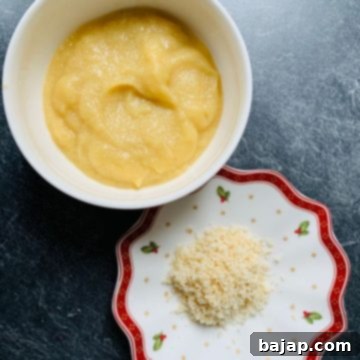
Austrian Horseradish Sauce (Apfelkren)
By Nora
Pin Recipe
10 minutes
10 minutes
Side Dish
Austrian
4 servings
13 kcal
Equipment
-
Small Mixing Bowl
-
Grater (fine grater or microplane recommended)
Ingredients
- 360 g (12.7 oz) Apple Sauce (homemade or store-bought, preferably unsweetened)
- 2-3 tablespoons Fresh Horseradish (grated, adjust to desired spice level)
Instructions
-
Peel the horseradish root and grate the desired amount (starting with 2-3 tablespoons). Remember to work in a well-ventilated area to avoid eye irritation.
-
In a small mixing bowl, combine the applesauce. Gradually add the freshly grated horseradish, stirring well after each addition.
-
Taste the Apfelkren and adjust the amount of horseradish until you achieve your preferred balance of spiciness and sweetness. Mix thoroughly.
-
Serve your homemade Apfelkren immediately on the plate or in small serving bowls. Enjoy!
Notes
How to Make Homemade Apple Sauce without Sugar
Peel and coarsely chop 5 apples (approx. 28.22 oz / 800 g). Place in a large cooking pot, add 3.38 oz / 100 ml of water and the juice of half a lemon. Cook on low heat for 20-30 minutes until soft. Blend with a hand blender to your desired consistency.
Never miss a recipe!Sign up and let me spoil you weekly with a delicious homemade recipe!
Apfelkren, Apple Horseradish Sauce, Apple Sauce, gluten-free, Grated Horseradish, Horseradish Cream Sauce, Horseradish Sauce, Austrian Sauce, Tafelspitz Pairing
Like this recipe?Mention @combinegoodflavors or tag #combinegoodflavors!
Nutrition values are estimates only, using online calculators. Please verify using your own data.

⛑️ Food Safety Guidelines
Ensuring food safety is paramount when preparing any meal. Please keep these general guidelines in mind:
- Always cook food to a minimum internal temperature of 165 °F (74 °C) to eliminate harmful bacteria.
- Avoid cross-contamination by never using the same utensils on cooked food that previously touched raw meat.
- Thoroughly wash your hands with soap and water after handling raw meat or produce.
- Do not leave perishable food sitting out at room temperature for extended periods; refrigerate promptly.
- Never leave cooking food unattended on the stovetop or in the oven.
- When cooking with oils, choose those with a high smoking point to prevent the formation of harmful compounds.
- Always ensure good ventilation in your kitchen, especially when using a gas stove, to prevent the buildup of fumes.
For further comprehensive information on safe food handling practices, please refer to the Safe Food Handling – FDA guidelines.
